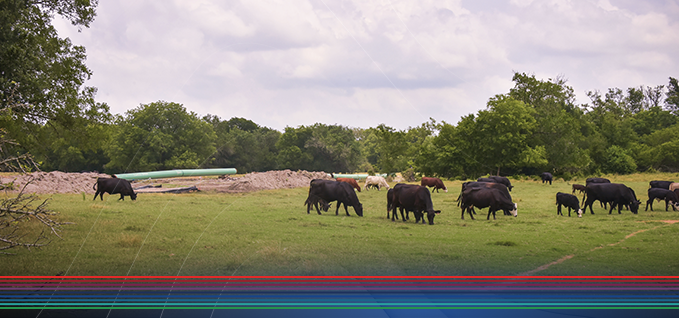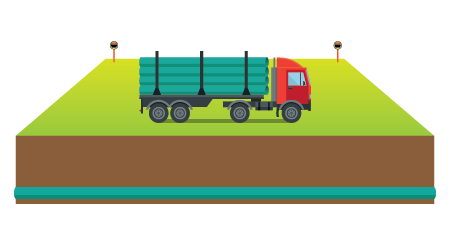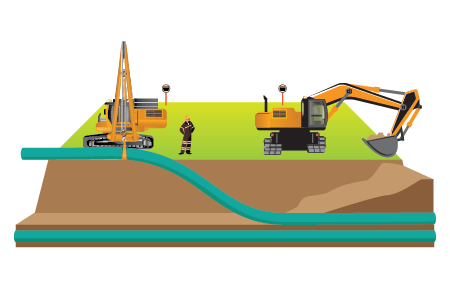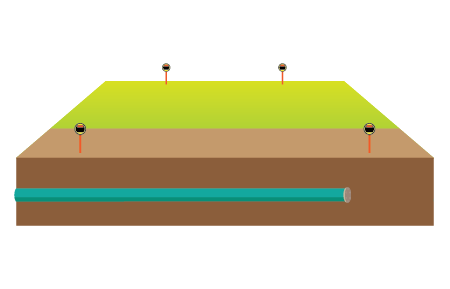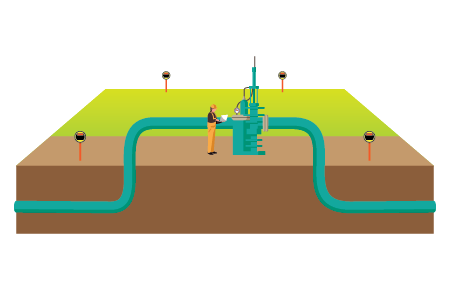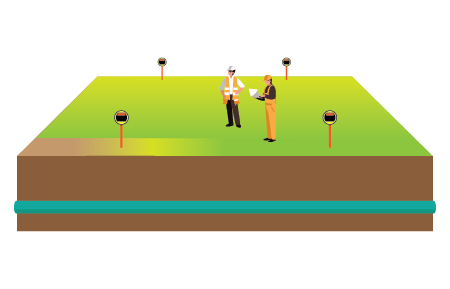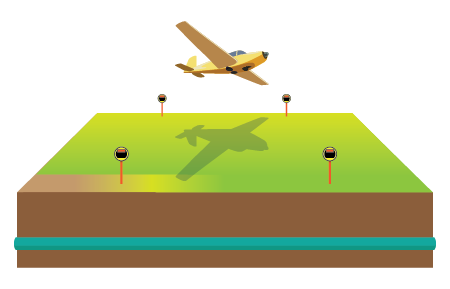ExxonMobil Pipeline Company's pipeline experts may determine replacement is preferred over repair of existing pipe.
Replacement projects must meet or exceed current standards for material, design and construction. We focus on safety and quality at every step of the replacement process, from manufacturing, transport, assembly and burial of pipe, to restoration of the right-of-way surface.
The pipeline route will generally parallel the existing utility corridors where feasible. In some cases, however, an alternate path may be preferred to reduce the impact on neighbors and the environment.
High-Quality Materials
We monitor the manufacture, storage and transportation of materials to confirm they meet or exceed industry regulations and standards.
Route Design & Approval
Routing will generally parallel existing utility corridors where feasible.
Installation
Typically, a trench will be excavated and soil set aside. Pipe segments are lined up on the ground, welded and installed in the trench, and the trench is backfilled.
Decommissioning the Existing Pipeline
A pipeline that has been replaced is typically decommissioned, or safely removed from service, and maintained in place to minimize disruptions to the environment, surface, our neighbors, existing pipelines and other utilities.
Testing & Commissioning the New Pipeline
Inspections (e.g., hydrotesting) are conducted to verify the integrity of the new pipe before it is placed into service.
Restoring the Right-of-Way (ROW)
ROWs and work areas are restored consistent with landowner agreements.
Surveillance Monitoring
ExxonMobil Pipeline Company uses aerial surveillance and ground inspection to monitor the pipeline in the interest of public safety and environmental protection.
